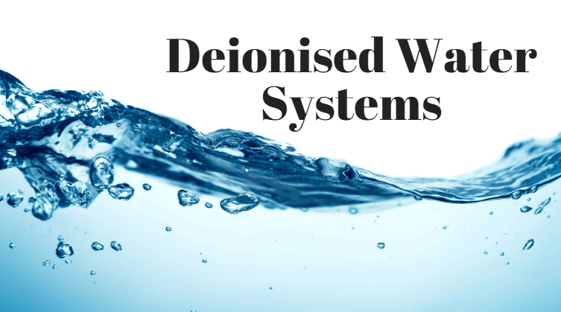
Getting the best quality water for your facility may not be an easy task if you aren’t sure which system will achieve this for you. Of course, every type of water purification system can offer specific benefits to your facility. However, deionisation may surpass them all. This article will discuss the differences between electro and conventional deionisation, and highlight the many benefits of switching to this type of water purification.
What Does Deionisation Do?
Deionisation exchanges the anions and cations in water for hydrogen and Hydroxideions, removing contaminants like sodium, calcium and magnesium in the process. This is an effective means of removing inorganic impurities and if required continually polishing the purified water for even better purity. Deionisation can be accomplished in two ways: via electric charge, (CDI) or by the use of chemical Ion Exchange using Ion Exchange resins.
Electro-Deionisation
If your facility is one which requires water of high level of purity without using chemicals, electro-deionisation is able to deliver this. Unlike conventional deionisation, which uses resins to exchange out the impurities, electro-deionisation uses anodes and cathodes to create a field across cells containing Ion Exchange resin sandwiched between Ion selective membranes. This allows impurities to be removed without the use of chemicals, making it ideal for facilities producing pharmaceutical, cosmetic or food and drink products.
Should your facility require the removal of bacteria from water, it’s likely that you will need to pre-treat with reverse osmosis. However, you may wish to pre-treat regardless, as bacteria can be a significant problem for deionisation systems if it is allowed to enter, potentially requiring complete system shut-down in order for cleaning and maintenance to take place.
Conventional Deionisation
Conventional deionisation uses resins which have been chemically charged. Resins can be placed together in a mixed bed, or reside in separate areas of the system. Conventional DI sees water being passed through a cation resin to remove water’s cations, and then through an anion resin, where all anions are removed. The regeneration of deionisation resins involves the use of hydrochloric acid and sodium hydroxide.
The suitability of conventional deionisation for your facility will be dependent on the acceptability to hold and consume chemicals and also to discharge a chemical effluent. Conventional deionisation is suitable technically for all applications, however some Companies prefer not to have the regeneration chemicals on the premises.
The quality of feed water is important with all deionised water systems. Reverse osmosis is always used to pre treat the feed water to Continuous Electro Deionisers. Also the combination of Reverse Osmosis and conventional Deionisers can be a very effective solution in producing a consistently pure water. The addition of RO provides excellent performance in the removal of bacteria, endotoxins.
Why To Replace Your Current System With Deionisation
Deionisation allows you to have several levels of water quality and composition at your fingertips. An on-site system allows all water testing to occur at your facility, and your staff to ensure that all water is always at the right level of quality. High customisation is a hallmark of electro-deionisation systems, which are able to be configured for a wide variety of purity levels from 50 to 0.055 microsiemen.
An in-house DI system is an investment in efficiency, slashing your facility’s water loss – and costs – by maximising water recovery. Having a deionisation system at your facility also means that you can optimise your long-term operating costs without having to worry about spending more on energy and water consumption.
Also in terms of cost, an in-house deionisation system eliminates the cost, quality variation and waiting time to have water delivered to your facility, allowing you to manufacture products on a continuous quality basis.
Deionisation is a simple yet powerful process which removes contaminants from water, but in such a way that consistent flow rates and dependable purity is always maintained.
When Considering The Options, Get Free Help From The Experts
Our Wychwood Water team is well-versed in the many benefits of switching to a DI system. If you’re wondering which DI system will work best for you, you can get help right now, and at no cost to you with our Guide to Deionised Water Treatment Systems. This free resource contains everything you need to know to make an informed decision about switching. We also encourage you to get in touch with us via email on sales@wychwood-water.com if you require further information or a survey.










 We are a specialist independent company involved in water purification and water treatment technologies
We are a specialist independent company involved in water purification and water treatment technologies


